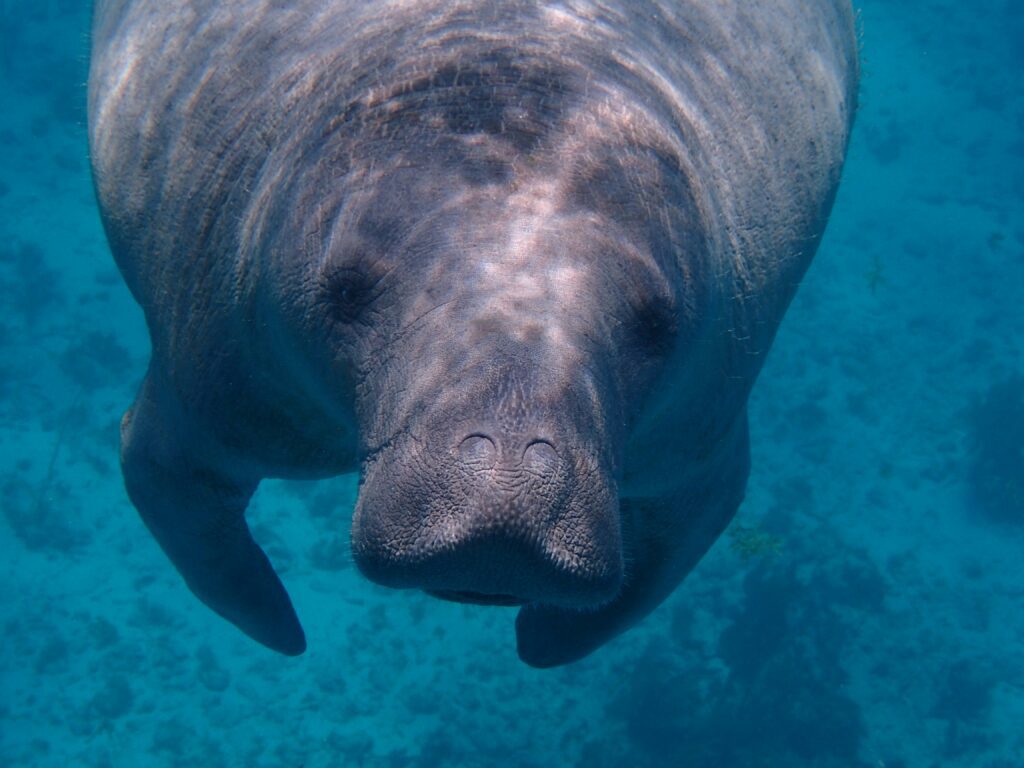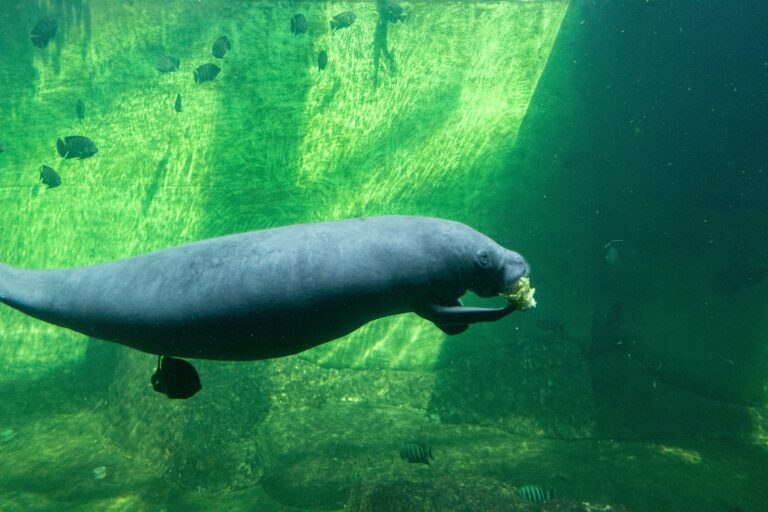In the serene coastal waters of the world, there exists a gentle giant whose presence both captivates and intrigues: the manatee. Often referred to as “sea cows,” these marine mammals possess a charm and mystique that have inspired tales and captured the hearts of many. But beyond their endearing demeanor lies a crucial role they play in maintaining the delicate balance of coastal ecosystems. Join us as we delve into the fascinating lives of manatees, uncovering their significance as guardians of coastal waters.
Ecological Importance of Manatees
Manatees play a crucial role in coastal ecosystems, contributing to the balance and health of their habitats in several significant ways. As herbivores, their grazing habits have a profound impact on the vegetation within their environments, influencing habitat preservation, nutrient cycling, and overall ecosystem dynamics.
Grazing Habits and Habitat Preservation
Manatees are primarily herbivorous, feeding on a variety of aquatic plants such as seagrasses, algae, and other submerged vegetation. Their grazing activities help to control the growth of these plants, preventing overgrowth that could potentially choke waterways and disrupt the balance of the ecosystem. By consuming large quantities of vegetation, manatees effectively act as natural lawnmowers, maintaining the health and diversity of their habitats.
Seed Dispersal and Biodiversity Maintenance
In addition to their grazing habits, manatees also play a crucial role in seed dispersal and the maintenance of biodiversity within coastal ecosystems. As they feed on various plant species, they inadvertently ingest seeds, which are then dispersed through their feces. This process helps to transport seeds to new areas, promoting the growth of vegetation and contributing to the overall diversity of plant life within the ecosystem. By facilitating the dispersal of seeds, manatees play a vital role in the regeneration and sustainability of coastal habitats.
Impact on Water Quality and Nutrient Cycling
Furthermore, manatees contribute to the maintenance of water quality and nutrient cycling within their ecosystems. Through their consumption of vegetation, they help to regulate nutrient levels in the water, preventing excessive accumulation that could lead to algal blooms and other harmful phenomena. By grazing on aquatic plants, manatees also assist in the recycling of nutrients, as the plant material they consume is broken down and reintroduced into the ecosystem in the form of organic matter.
Threats to Manatees
Manatees face numerous threats to their survival, primarily due to human activities and environmental changes. Identifying and understanding these threats is crucial for implementing effective conservation measures to protect these gentle creatures.
Human-related Impacts
One of the most significant threats facing manatee populations is habitat loss and degradation due to human development and activities. Coastal development, including the construction of marinas, waterfront properties, and shoreline alterations, often leads to the destruction and fragmentation of manatee habitats. Loss of essential habitats such as seagrass beds and freshwater springs reduces the availability of food and shelter for manatees, making them more vulnerable to other threats.
Another significant human-related threat to manatees is boat collisions. As manatees inhabit shallow coastal waters and estuaries, they are frequently exposed to boat traffic, increasing the risk of collisions. These collisions can cause severe injuries or fatalities, impacting manatee populations and hindering their recovery efforts. Implementing speed limits in manatee zones, enforcing boating regulations, and increasing public awareness are essential steps in mitigating this threat.
Climate Change
Climate change poses a significant threat to manatee habitats and populations. Rising sea levels, increasing water temperatures, and changes in weather patterns can disrupt the availability of suitable habitats and alter food sources for manatees. For example, changes in sea temperature and salinity can affect the distribution and abundance of seagrass beds, a primary food source for manatees. Additionally, extreme weather events such as hurricanes can lead to habitat destruction and displacement of manatees.
The impact of climate change on manatees extends beyond habitat changes. It can also exacerbate other threats, such as the spread of infectious diseases and harmful algal blooms. Warmer water temperatures can increase the prevalence of diseases among manatees, weakening their immune systems and reducing their ability to cope with other stressors. Similarly, changes in nutrient levels and water quality associated with climate change can contribute to the proliferation of harmful algal blooms, which can poison manatees and degrade their habitats.

Conservation Efforts
Conservation efforts aimed at protecting manatees involve a combination of strategies, including rehabilitation and rescue programs, legislative measures, and public awareness campaigns. These initiatives are essential for mitigating threats and ensuring the long-term survival of manatee populations.
Rehabilitation and Rescue Programs
One crucial aspect of manatee conservation is the establishment of rehabilitation and rescue programs dedicated to injured, sick, or orphaned manatees. These programs provide medical care, rehabilitation, and, when possible, release back into the wild. Organizations such as the Florida Fish and Wildlife Conservation Commission (FWC) and various marine mammal rescue centers operate rescue teams that respond to reports of injured or distressed manatees. Through these efforts, countless manatees have been rehabilitated and successfully reintegrated into their natural habitats, contributing to the overall health and resilience of manatee populations.
Legislative Measures
Legislative measures play a vital role in manatee conservation by implementing regulations and policies aimed at protecting manatees and their habitats. In regions where manatees are found, such as Florida, strict regulations govern activities such as boating, fishing, and coastal development to minimize disturbances to manatees and their habitats. Speed zones and boating restrictions are established in areas frequented by manatees to reduce the risk of collisions. Additionally, laws prohibiting harassment, hunting, and trade of manatees help deter illegal activities and safeguard these marine mammals from exploitation.
Public Awareness Campaigns
Public awareness campaigns are instrumental in garnering support for manatee conservation and promoting responsible behavior among stakeholders. Educational initiatives, outreach programs, and media campaigns raise awareness about the importance of manatees, the threats they face, and the actions individuals can take to help protect them. These campaigns target various audiences, including boaters, anglers, waterfront property owners, and the general public, emphasizing the significance of conserving manatees and their habitats for future generations.
VIDEO CREDITS NET GEO WILD
FAQs
Q. What is a manatee?
A. Manatees are large, fully aquatic marine mammals known for their gentle demeanor and herbivorous diet. They belong to the order Sirenia, which also includes dugongs and the extinct Stellar’s sea cow.
Q. Where do manatees live?
A. Manatees are primarily found in shallow, warm coastal waters, rivers, and estuaries in tropical and subtropical regions. They inhabit areas such as Florida, the Caribbean, parts of West Africa, and the Amazon basin.
Q. What do manatees eat?
A. Manatees are herbivores, feeding mainly on aquatic plants such as seagrasses, mangrove leaves, and freshwater vegetation. They consume a large quantity of vegetation daily to sustain their large bodies.
Q. Are manatees endangered?
A. Yes, manatees are considered endangered or threatened throughout their range due to various factors including habitat loss, water pollution, boat collisions, and entanglement in fishing gear. Conservation efforts are underway to protect and conserve these gentle giants.
Q. How do manatees communicate?
A. Manatees communicate through a variety of vocalizations, including squeaks, chirps, and whistles. They also use body language such as touching and nuzzling to communicate with each other. While they do not have external ears, they have good hearing and can detect sounds both above and below the water.
Conclusion
In the vast tapestry of marine life, manatees stand as gentle stewards of coastal waters, their presence serving as a barometer of ecosystem health. As we navigate an ever-changing world, it becomes increasingly imperative to recognize and safeguard these guardians of the seas. By understanding their ecological significance and addressing the threats they face, we can ensure a brighter future not only for manatees but for the entire coastal ecosystem they inhabit. Let us pledge to protect and preserve these magnificent creatures for generations to come, for in their survival lies the resilience of our coastal waters.
UP NEXT
Ocean Conservation and the Role of Seaweed-based Bioplastics



